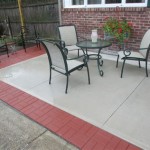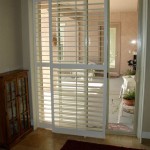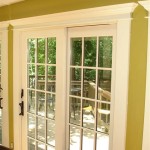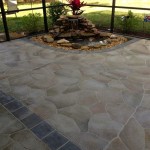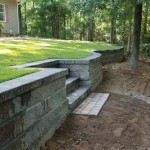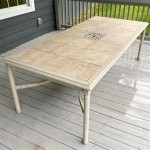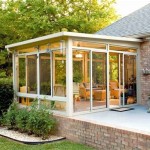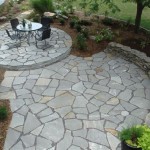Adding A Patio Wall Block For An Outdoor Paradise Pool
Creating an outdoor oasis centered around a swimming pool frequently involves more than just the pool itself. The surrounding landscape plays a crucial role in establishing the desired ambiance and functionality. Patio wall blocks are increasingly popular for enhancing pool areas, offering aesthetic appeal, structural support, and practical solutions for landscaping challenges. This article explores the benefits and considerations of incorporating patio wall blocks into a poolscape, providing guidance on design, construction, and maintenance.
Patio wall blocks, often mistakenly referred to as "retaining wall blocks" even when they aren't retaining soil, are typically manufactured from concrete or stone, offering a wide range of colors, textures, and sizes. They are designed to interlock, facilitating easy construction and creating a visually appealing, uniform surface. Their versatility allows for the creation of various features, including seating walls, planters, fire pits, water features, and raised pool decks. The choice of block will depend on the desired aesthetic, the functionality required, and the budget available.
Before embarking on a patio wall block project, careful planning is essential. This includes assessing the site conditions, determining the purpose of the wall, and selecting appropriate materials. Understanding the local building codes and regulations is also crucial to ensure compliance. Professional consultation with a landscape architect or contractor may be necessary, especially for complex designs or projects involving significant excavation.
Enhancing Aesthetics and Defining Space
One of the primary benefits of using patio wall blocks around a pool is the enhancement of the overall aesthetic appeal. A well-designed wall can transform a basic pool area into a luxurious and inviting space. The selection of block color and texture can complement the pool's design and the surrounding landscape, harmonizing the different elements into a cohesive whole. For example, natural stone blocks can create a rustic, organic feel, while smooth concrete blocks can achieve a modern, minimalist look.
Furthermore, patio wall blocks can effectively define different zones within the pool area. A low wall can delineate the pool deck from a lawn or garden, creating a visual separation and preventing accidental splashing. Higher walls can provide privacy and screen unsightly views, enhancing the feeling of seclusion and relaxation. Segmenting the pool area into distinct zones can improve the overall flow and functionality of the space, making it more enjoyable for users.
Beyond simple boundary definition, patio walls can also be incorporated into elaborate landscape designs. Tiered walls can create elevated planting beds, adding visual interest and texture to the pool area. Built-in seating can provide comfortable resting spots for swimmers and sunbathers. Water features, such as waterfalls or fountains, can be integrated into the wall design, creating a soothing and visually captivating element. The possibilities are virtually endless, limited only by imagination and budget.
The structural integrity of the patio wall is paramount. Even low walls require proper construction techniques to prevent leaning, settling, or collapse. A stable foundation is essential, typically consisting of compacted gravel or crushed stone. Adequate drainage is also crucial to prevent water from accumulating behind the wall, which can lead to hydrostatic pressure and structural damage. The blocks should be interlocked securely and properly aligned to ensure a strong and stable structure.
The aesthetic integration of the wall with the existing landscape is equally important. The wall should blend seamlessly with the surrounding environment, complementing the colors, textures, and overall style of the pool area. Careful consideration should be given to the placement of plants and other landscaping elements to enhance the visual appeal of the wall and create a harmonious and inviting space.
Providing Functional Solutions and Added Value
Beyond their aesthetic benefits, patio wall blocks offer a range of functional solutions that can enhance the usability and value of a pool area. They can be used to create raised pool decks, providing a level surface for lounging and entertaining. They can also be used to build outdoor kitchens and bars, creating a convenient and enjoyable space for preparing and serving food and drinks. The added functionality can significantly enhance the appeal of the pool area and increase the overall value of the property.
One of the most practical applications of patio wall blocks is their use in creating seating areas. A low wall can serve as a comfortable bench for relaxing and socializing. Built-in seating can be strategically placed around the pool area to provide convenient resting spots for swimmers and sunbathers. The seating can be customized to fit the specific needs and preferences of the users, incorporating cushions, pillows, and other accessories for added comfort.
Another significant benefit of patio wall blocks is their ability to retain soil and prevent erosion. This is particularly useful in areas with sloping terrain or unstable soil conditions. A well-designed retaining wall can prevent soil from washing into the pool, keeping the water clean and clear. It can also create level planting areas, allowing for the growth of a wider variety of plants and flowers. This not only enhances the aesthetic appeal of the pool area but also helps to protect the environment.
Building an outdoor kitchen or bar using patio wall blocks can significantly enhance the entertainment value of the pool area. The wall can provide a sturdy and attractive base for countertops, sinks, grills, and other appliances. It can also incorporate storage space for utensils, dishes, and other supplies. An outdoor kitchen allows for convenient food preparation and serving, making it easier to host parties and gatherings around the pool.
The addition of a fire pit built from patio wall blocks can extend the usability of the pool area into the cooler months. A fire pit provides warmth and ambiance, creating a cozy and inviting space for socializing and relaxing. It can also be used for cooking and roasting marshmallows, adding to the enjoyment of the outdoor experience. The fire pit can be designed to complement the overall style of the pool area, using the same materials and colors as the patio wall.
Ensuring Proper Installation and Maintenance
Proper installation is crucial to ensure the structural integrity and longevity of a patio wall built using blocks. A poorly constructed wall can be unsightly and unsafe, potentially leading to costly repairs or even collapse. It is essential to follow the manufacturer's instructions and adhere to best practices for construction. Professional installation is highly recommended, especially for complex designs or projects involving significant excavation.
The foundation is the most critical element of a patio wall. It must be level, compacted, and well-drained to prevent settling or shifting. A layer of compacted gravel or crushed stone is typically used as the base, providing a stable platform for the blocks. The depth of the foundation will depend on the height of the wall and the soil conditions. In areas with unstable soil, it may be necessary to use a deeper foundation or even reinforced concrete.
The blocks should be interlocked securely and properly aligned to ensure a strong and stable structure. Many types of concrete blocks are designed with a tongue-and-groove system that facilitates easy interlocking. It is important to use a level and a plumb bob to ensure that the wall is straight and vertical. Any gaps or irregularities should be corrected immediately to prevent future problems.
Drainage is essential to prevent water from accumulating behind the wall, which can lead to hydrostatic pressure and structural damage. A drainage system typically consists of a perforated pipe placed behind the wall, surrounded by gravel or crushed stone. The pipe should be sloped to allow water to drain away from the wall. Weep holes can also be incorporated into the wall design to allow water to escape.
Regular maintenance is necessary to keep a patio wall in good condition. This includes cleaning the blocks to remove dirt, stains, and algae. Power washing can be used to clean the blocks, but it is important to use a low-pressure setting to avoid damaging the surface. Any cracks or damage should be repaired promptly to prevent further deterioration. Sealing the blocks can help to protect them from the elements and prolong their lifespan.
The choice of materials for a patio wall is crucial for both its aesthetic appeal and its durability. Concrete blocks are a popular choice due to their affordability and versatility. They are available in a wide range of colors, textures, and sizes. Natural stone blocks are more expensive but offer a more natural and elegant look. They are also more durable and resistant to weathering. The choice of material will depend on the desired aesthetic, the budget, and the environmental conditions.
By carefully planning and executing the construction of a patio wall block feature, homeowners can significantly enhance the beauty, functionality, and value of their outdoor pool area. The possibilities are limited only by imagination and budget. With proper installation and maintenance, a patio wall can provide years of enjoyment and create a true outdoor paradise.

Our Small Backyard Pool The Cost Process More Young House Love

Outdoor Kitchen Design Ideas For Rooms

20 Beautiful Hillside Pool Ideas With Retaining Walls Nikki S Plate

Pool Landscape To Beat The Henderson Heat

Our Small Backyard Pool The Cost Process More Young House Love

Our Small Backyard Pool The Cost Process More Young House Love

Sunken Patio Using Retaining Walls To Expand Outdoor Livingroom Traditional Landscape Minneapolis By Allan Block Wall And Systems Houzz
.jpeg?strip=all)
What Are Pavers Types Pros Cons And More

Pool Patio Ideas 15 Ways To Create A Fabulous Poolscape

Contemporary Patio Includes Outdoor Kitchen Pool 2024
Related Posts

